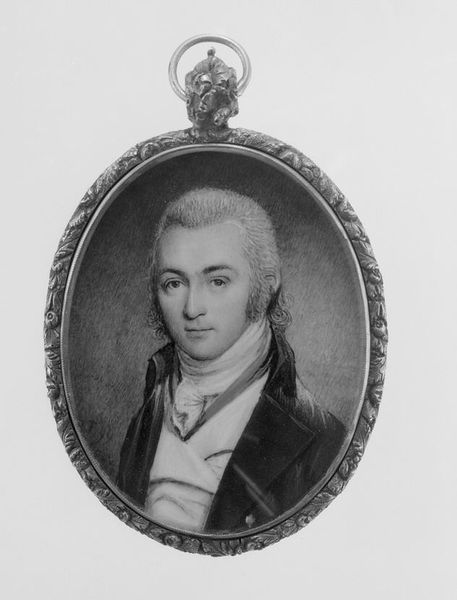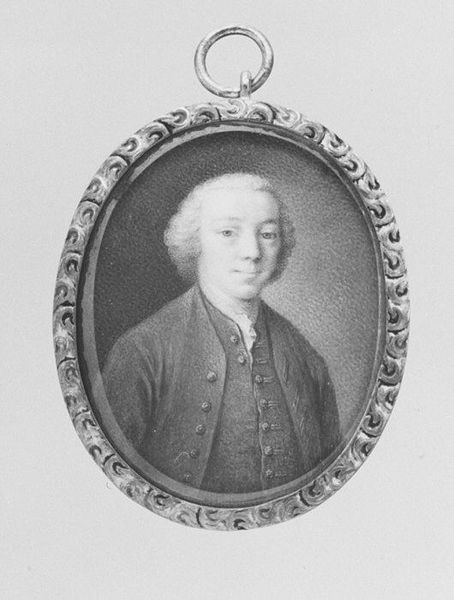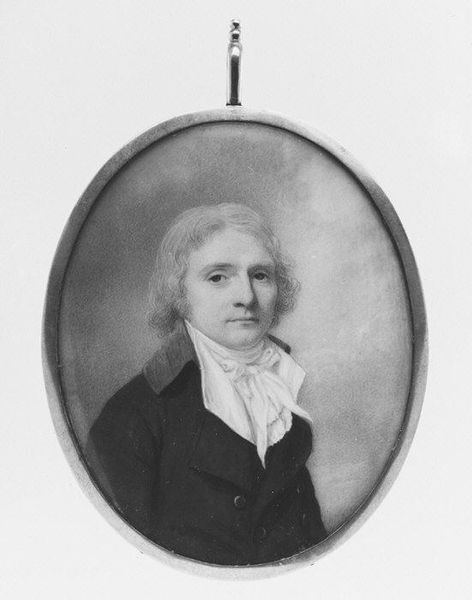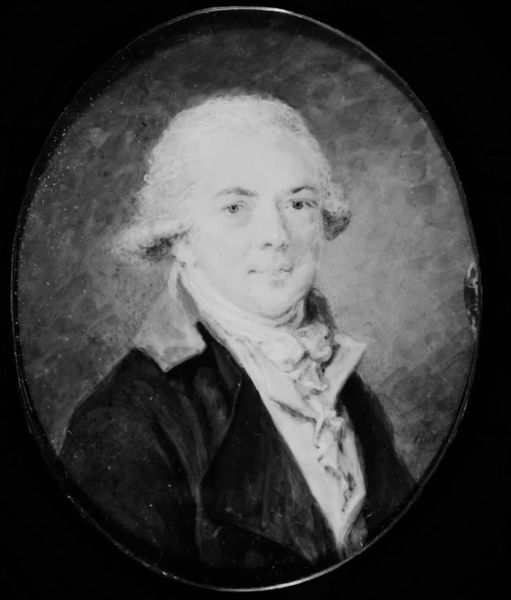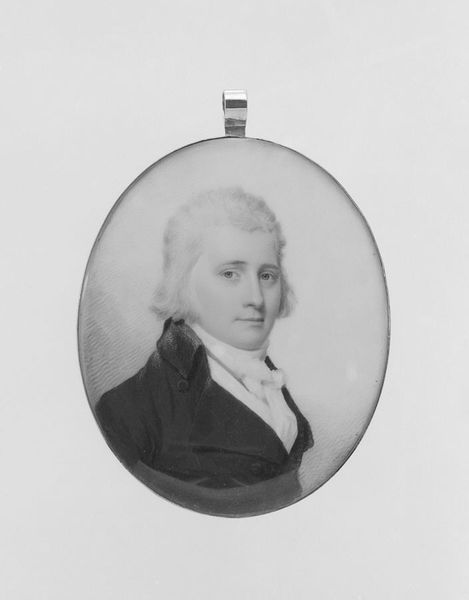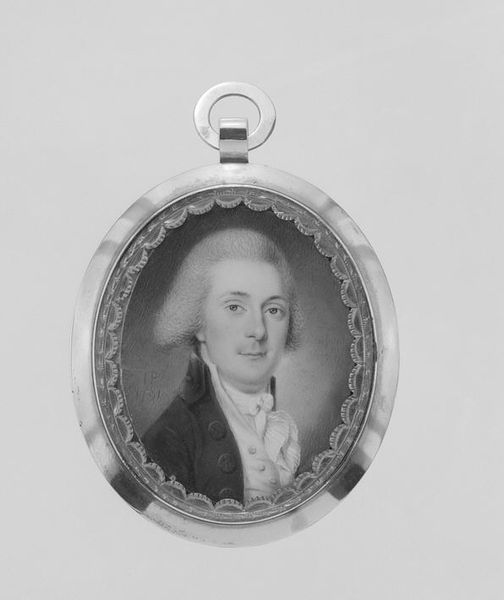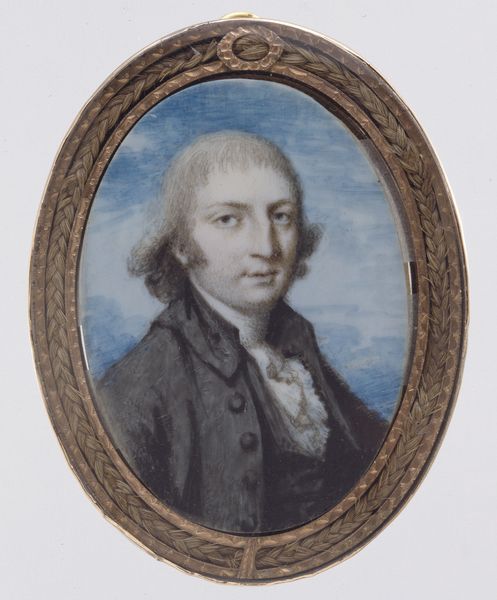
Portrait of a Man, Said to Be James Madison (1751–1836) 1795
0:00
0:00
drawing, pencil
#
portrait
#
drawing
#
neoclacissism
#
black and white
#
pencil
#
monochrome photography
#
monochrome
#
monochrome
Dimensions: Oval, 2 1/2 x 2 1/4 in. (65 x 56 mm)
Copyright: Public Domain
Curator: The drawing before us is titled "Portrait of a Man, Said to Be James Madison (1751–1836)." It was created around 1795 by Annibal Christian Loutherbourg, and it currently resides here at The Metropolitan Museum of Art. Editor: My first thought is that it’s quite stark. The severe monochrome palette and oval frame give it a strong neoclassical feel. What are your initial impressions? Curator: I concur with the neoclassical label. There is certainly a level of detachment, achieved in part by the precise, almost clinical rendering of the subject’s features using just pencil. I also note the stark contrast of light and shadow that models the face. Editor: Focusing on the material aspects, consider the pencil itself. It likely was manufactured using techniques involving labor, trade routes for graphite, and the craftsmanship in woodworking for its casing. Even in a portrait meant to convey status, the very tools reveal layers of making. And then consider the labor and time expended for drawing. How might the subject perceive its value as an artifact? Curator: Intriguing questions to ponder. Considering this miniature portrait through a Formalist lens, I find it compelling to look beyond mere likeness. The restrained composition and limited tonal range serve to emphasize line and form above all. His gaze, almost vacant, directs us not to the sitter's personality, but the aesthetic qualities of the representation itself. Editor: Agreed. However, the neoclassical focus on an idealised form sometimes feels dehumanizing to me. There's a story hidden behind even such sparse mediums, perhaps involving colonial resource extraction for its pencils, social standing represented through its clothing and maybe some tension within his eyes in terms of ethical production and consumption practices during that era. These considerations ground the art within a specific socio-economic reality, allowing us to reconsider what it tells us about status, craft and value beyond aesthetics alone. Curator: I appreciate you grounding us in that perspective, highlighting the importance of understanding material history and challenging our assumptions around high art. I do think looking at structure also allows appreciation, particularly when form meets intention, especially when deciphering images such as these. Editor: And likewise, investigating that materiality can ground even the most esoteric formal exploration, enabling a much broader appreciation that considers not just aesthetics or philosophy, but the real lived lives impacted during its creation. Curator: Indeed. Editor: Certainly some potent points to consider, and many things to see beyond simply an image of Madison!
Comments
No comments
Be the first to comment and join the conversation on the ultimate creative platform.





